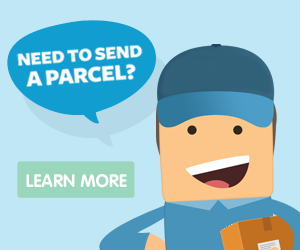
Did you know that there are more than 4.4 billion social media users across the globe?
Is it any wonder then that there are hundreds of ways businesses choose to use social media for marketing their brand and reaching out to both existing and potential customers.
From working with social media influencers to advertising campaigns, businesses are forever coming up with new and creative ways to engage with their target audience.
However, when it comes to using social media for each stage of the customer journey (from discovery to the point of sale and then advocacy), there tends to be a gap.
This is why Irish Parcels have put together this guide. Irish Parcels are experts at courier services in Ireland, so if you need to send a parcel for your e-commerce store be sure to get a quote.
Below, we’re going to look at how you can build an e-commerce funnel on social media that leads to increased sales. And by the end, you’ll have a better understanding of exactly how social media fits into each stage of your sales funnel.
What does a sales funnel look like?
Let’s first take a quick look at the different stages of the sales funnel, just in case you’re not familiar with the traditional model. Then we can then begin to understand how social media can be used to achieve your goals. The five stages of your sales funnel will include:
• Awareness
• Consideration
• Action
• Engagement
• Advocacy
With this in mind, we’ll now take a look at how you can use social media as a tool to move consumers from the awareness stage through to the advocacy stage.
1. Raising awareness
Your social media funnel begins with raising awareness of your brand. This is because potential customers might not be aware of your e-commerce business, and therefore, you need to let them know your brand exists.
However, this first touchpoint is not the time for a hard sale. Instead, it’s about simply showing the value of your goods or services and letting consumers know who you are. And there are several ways this can be achieved through social media. These include:
• Creating great content that people want to share with their followers, for example, blogs, videos, guides and webinars
• Creating social media posts and content that answer the questions your target audience are searching for
• Paid advertising campaigns can improve awareness if you have the budget
• Utilising keywords to boost your SEO through social media can lead consumers to your e-commerce website organically
• Using relevant hashtags on your posts to help potential customers find your content
Ultimately, you can use one or more of these tactics to increase awareness of your brand – and we recommend a mixture of these.
2. Supporting further research
Now that potential customers are aware of your e-commerce brand, it’s time to get them through to the consideration stage of the funnel.
This is the point at which they begin to look for more specific information about your goods or services. This is also when they begin to research how and why you’re better than your competitors.
So, in order to move them through this stage, you need to make sure that you have plenty of helpful information readily available through your social media profiles. This can be done through:
• About us sections on your business pages
• Access to guides and tutorials that you have shared on your social media channels
• Links to your e-commerce website
• Reviews or comments from customers that have purchased your goods or services in the past
• Retargeting ad campaigns for those who have interacted with your website or content before but haven’t gone any further
By making it as easy as possible for consumers to find out more about your brand and your goods or services, you increase the chances of them making a purchase.
3. Encouraging action
The consumer is now equipped with more knowledge about your brand, so now you need to encourage them to make a purchase. If you’ve nurtured the relationship effectively up until this point, potential customers will now be at the stage where they don’t mind being sold to.
So, you should gently nudge them in the right direction to encourage action. You can do this by running more retargeting ad campaigns, sharing testimonials from happy customers and offering incentives through your social media channels. For example, you could offer purchase incentives such as new customer discount or free shipping.
In fact, according to a recent study, free shipping is the sales incentive that 88% of online shoppers want the most. As such, incentivising consumers in this way can be just what it takes to make that first sale.
4. Continuing your engagement
Once you’ve made a sale, it’s important that you don’t then forget about your customers. After all, you can’t take for granted that once they’ve made one purchase they are a lifelong fan.
However, this is the part of the funnel where lots of e-commerce brands fall down.
Because of this, you need to continue to nurture these relationships if you hope to gain their trust and loyalty. And again, there are serval ways you can use social media to do this. These include:
• Creating personalised content and social media posts based on their previous purchases
• Continuing to offer discounts and flash sales, advertising these on social media
• Starting a hashtag and encouraging consumers to post pictures of your goods or services being used
• Sharing interesting and useful content such as videos, blog posts and new product launches
• Using platforms like Twitter to start chats or run live videos on Facebook or Instagram, giving customers a chance to get involved in real-time
Again, consider using a mixture of these techniques to keep building relationships and encouraging engagement with consumers.
5. Converting your customers to fans
The final stage in your social media sales funnel is advocacy. Since you’ve made a sale and continued to build on your relationship with your customers, it’s time to go one step further.
You can do this by showing gratitude to your customers, either replying to their comments to thank them for their purchase or offering them personalised rewards. You can also offer further incentives such as discounts for customers who recommend you to their friends or entering them into a competition draw if they are happy to leave a review on your social media profiles. If you have customers outside of Ireland and need to send deliveries abroad, it may be worthwhile checking out our international parcel delivery service.
So there you have it; while traditional sales funnels definitely still have their place, creating a social media funnel for your e-commerce business can be hugely effective for boosting sales in today’s digital world.

